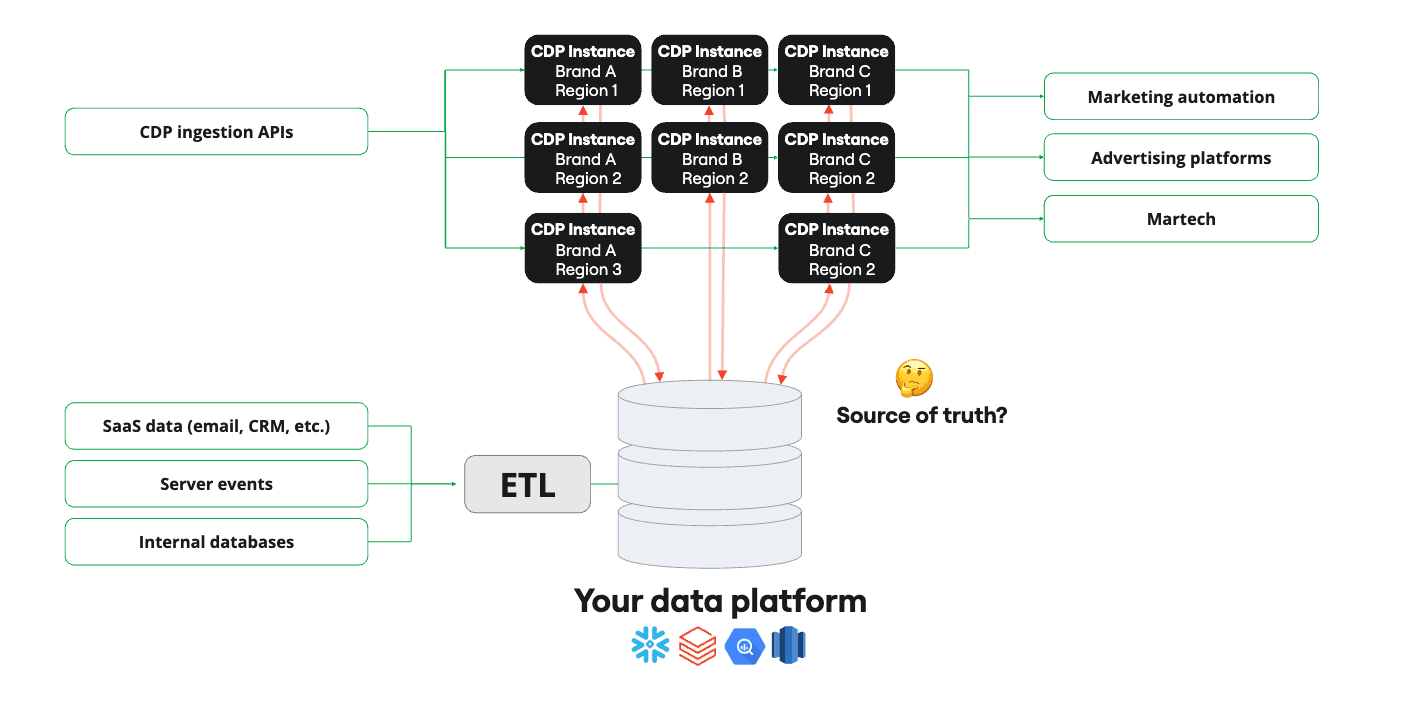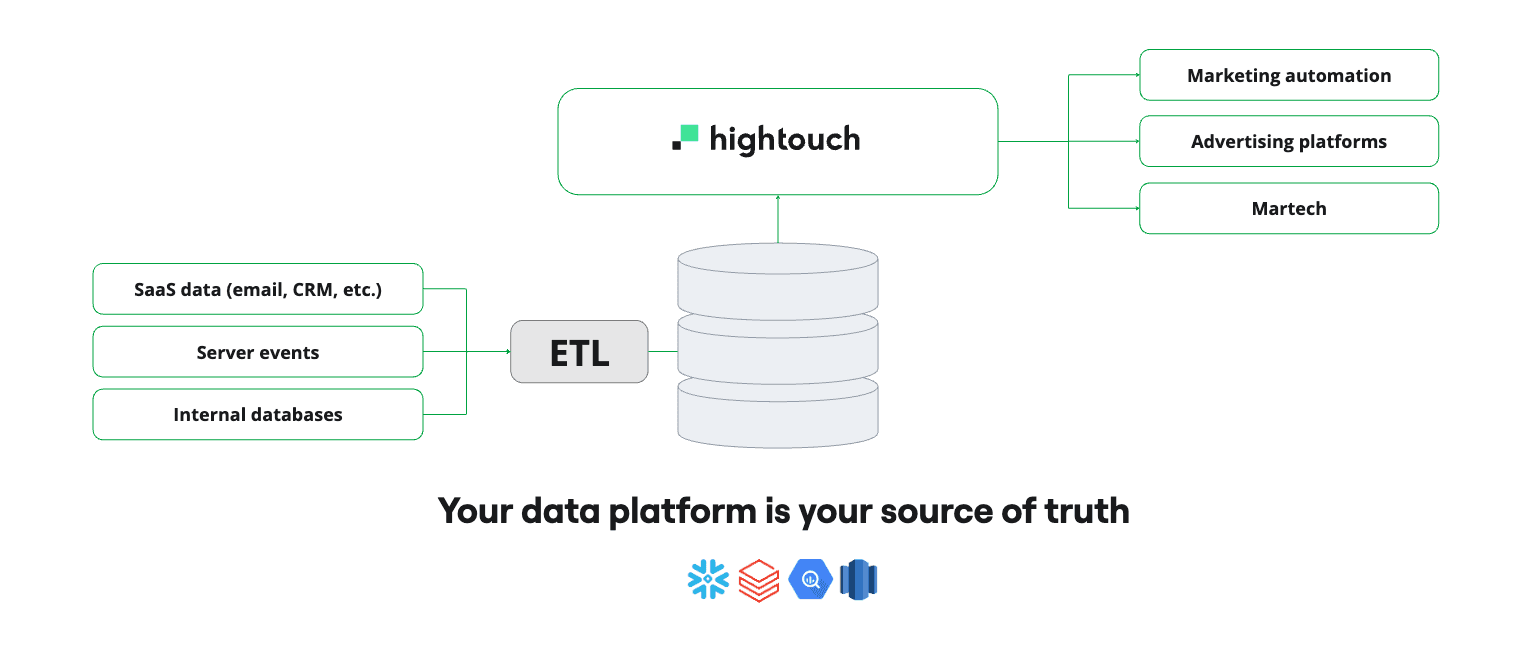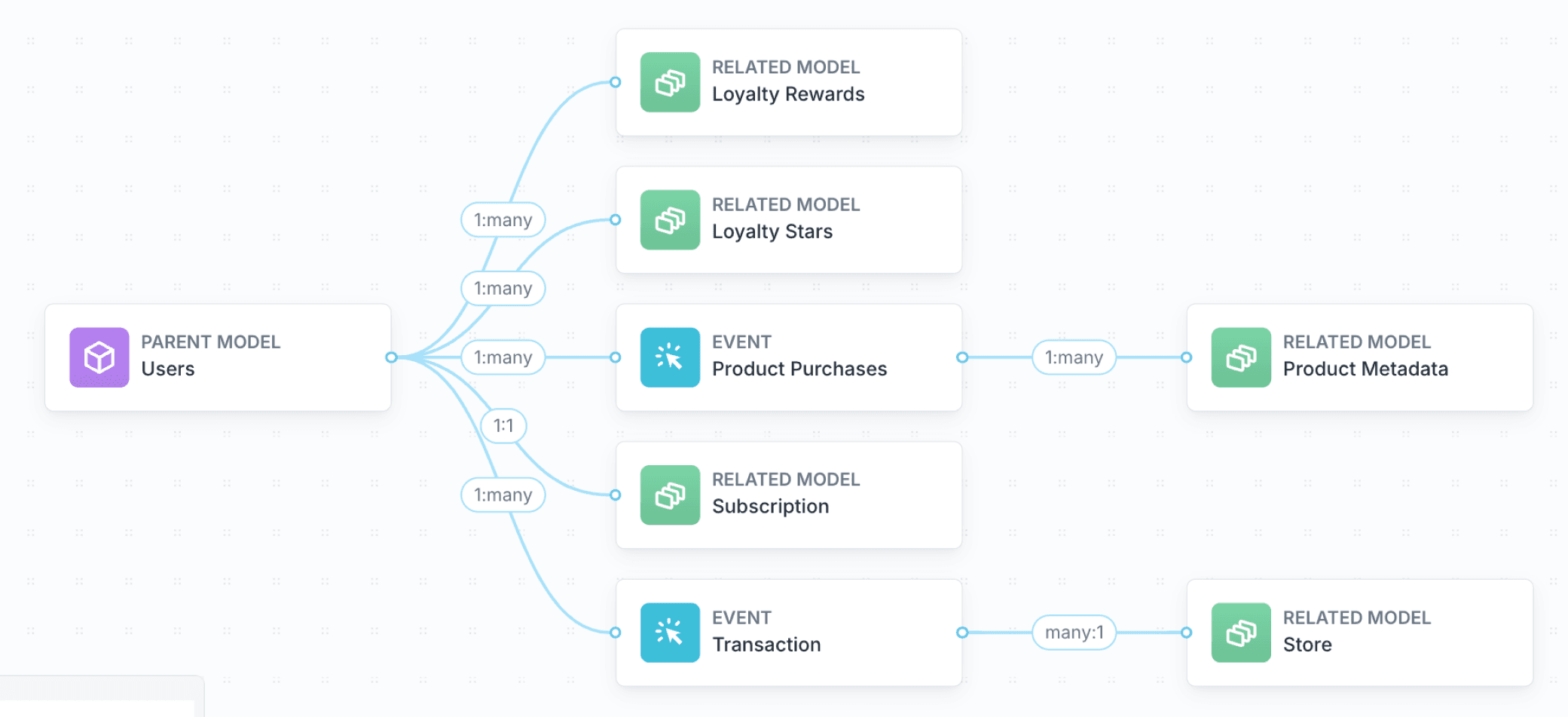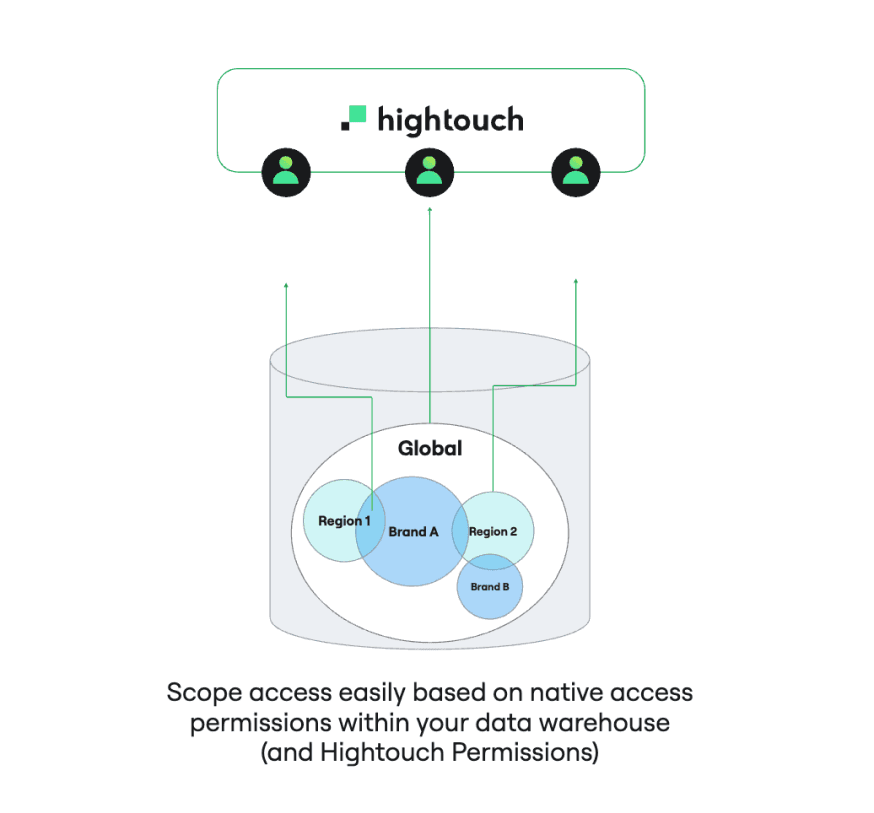For global enterprises and multi-brand companies, managing customer data across different markets and brands is increasingly challenging. Teams need to collect, store, and activate data differently across regions while ensuring strict compliance with local regulations like GDPR. Most importantly, they need to prevent teams from accidentally working with the wrong data—a mistake that could lead to compliance violations and substantial fines.
These challenges affect organizations of all sizes, from smaller multi-market companies to large conglomerates operating across the globe with multiple brands and large technical teams. In this blog post, we'll explore how Hightouch leverages your existing data warehouse to govern and automate campaign orchestration around customer data—all without adding technical complexity or overhead.
The band-aid solution: Multiplying traditional CDP instances
Traditional Customer Data Platforms (CDPs) typically handle multi-region and multi-brand governance through separate CDP instances. This means that after data teams invest significant time unifying and enriching data in the data warehouse, they must then segregate it again by brand and market, managing multiple pipelines to feed data into the right CDP instances.

Every CDP instance is an isolated black box requiring complex data maintenance and ongoing costs
The required instances can multiply quickly, especially if you create separate instances for development and production environments. The total often looks like: regions × brands × development/staging/production. We've worked with customers who attempted to implement up to 60 different CDP instances!
This approach comes with significant downsides. Each of these CDP instances:
- Acts as a black box with no raw data access
- Requires careful data conformity and regular maintenance
- Demands complex setup and configuration
- Incurs substantial additional costs for each new instance
The configuration work for each instance is substantial and likely includes:
- Creating multiple CDP instances for each brand/region
- Segregating unified customer data in the warehouse
- Managing multiple pipelines (region × brand × dev/staging/prod)
- Setting up bidirectional warehouse connections
- Configuring destination connectors for related accounts
- Managing role-based governance and SSO for each instance
The composable solution: Leveraging your warehouse for governance
Rather than offering a band-aid solution, Hightouch allows data teams to apply market and brand-based segregation within one workspace, leveraging your existing data warehouse's governance capabilities. As a composable CDP, Hightouch takes a fundamentally different approach from traditional CDPs by sitting natively on top of your data warehouse. We leverage your existing data platform's computational power and flexibility, and since we don't store customer data within our infrastructure, we're not bound by typical data ingestion restrictions.
This means you won't need to build and maintain custom ingestion pipelines just to get data into a CDP. If the data exists in your warehouse, it's ready for activation.

Hightouch streamlines multi-region and multi-brand CDP architectures
Instead of creating separate instances, Hightouch provides powerful tools to control data access within a single workspace, including direct data mapping, flexible access control, and automated pipeline management.
Direct data mapping
Hightouch maps directly to your customer definitions and existing data models through the Customer Studio Schema. The schema acts as a “presentation layer” defining the universe of data that should be exposed to marketers in the CDP. This is how Hightouch meets your data in place: peering into your data platform and using your data as it exists today. We won’t force you to ‘square-peg-round-hole’ your data into a specific profile as traditional CDPs do.
Below is an example schema, which shows relationships that define how customers relate to different events and entities, such as households or loyalty memberships, including “through relationships” (such as joining purchase data to product catalog metadata).

Flexible access control
Your data team can now use Hightouch’s subsets to control access for specific users. Subsets allow organizations to segment their total addressable audience data based on attributes and grant employees access based on these subsets of data using Role-Based Access Controls (RBAC).
For example, some organizations may have a Global Customers table but only want employees to be able to access data in Hightouch from the region or specific brand with which they work. By creating a subset for each region and/or brand, companies can assign specific employees (roles) to each subset and limit the data each employee can view and activate.

Data teams only need to manage a single warehouse connection and schema, while governance automatically happens at the user level. This simpler architecture brings an unexpected benefit: teams across regions and brands can learn from each other. With RBAC, marketers can view successful campaigns from other teams and replicate them with a single click—all while maintaining strict data access controls.
Automated pipeline management
Many organizations have centralized teams managing campaigns across multiple regions. While these teams can access all their authorized data through subsets, they still need to sync different audience segments to region-specific channels—like local paid media accounts or regional marketing automation folders. With traditional CDPs, this means creating duplicate audiences across multiple instances and manually ensuring each segment reaches the correct destination.
Hightouch simplifies this process with destination rules. Instead of managing multiple audiences, central teams can create a single audience definition and let destination rules automatically filter data per channel. These rules work at the row level, ensuring each customer record flows only to authorized destinations—no manual segregation required. We see destination rules regularly used to enforce consent rules, making sure user data is only sent to approved activation tools.

Teams can preview exactly how destination rules will affect their audiences before activating them. Since these previews query your data warehouse directly, they show precise counts of which customers will sync to each destination. When scheduled syncs run, Hightouch automatically applies these same rules to ensure each customer record reaches only its intended destinations.
Breaking free from multi-region complexity
Managing customer data across multiple regions and brands is inherently complex, but the solution doesn't have to be. Traditional CDPs often force companies to maintain multiple instances, creating unnecessary technical debt and operational overhead. Hightouch's warehouse-native approach provides a more elegant solution, leveraging your existing data infrastructure while adding powerful governance controls.
By choosing a composable CDP that works with your data where it lives, you can:
- Maintain a single source of truth
- Implement granular access controls
- Automate compliant data distribution
- Reduce operational overhead
- Enable cross-team learning and collaboration
Ready to learn more about how Hightouch can help manage your multi-region or multi-brand customer data? Contact our team to schedule a demo.















